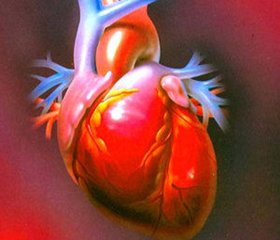Журнал «Здоровье ребенка» 2 (61) 2015
Вернуться к номеру
Cardiovascular disease of children with turner''s syndrome.
Авторы: Abaturov A.E.(1), Petrenko L.L.(1), Agafonova E.A.(1), Abaturova N.I.(2)
(1) — SI " Dnepropetrovsk Medical Academy, Ministry of Health of Ukraine"
(2) — CI "Dnepropetrovsk regional Children''s Clinical Hospital "DRC"
Рубрики: Педиатрия/Неонатология
Разделы: Клинические исследования
Версия для печати
We observed 42 patients withTurner’s syndrome, aged 1.5 to 17 years, who were examined in the regional endocrinology department СI "City Children's Hospital №1» DRC "and Dnepropetrovsk regional branch cardiorheumatological CI" Dnepropetrovskregional Children's Hospital "DRC ".
The diagnosis was confirmed by karyotyping Turner’s syndrome conducted in the Republican genetic center of KrivoyRog. All the children were carried out electrocardiography (ECG), echocardiography. The same studies were conducted level of IGF-I (IGF-I), cortisol, follicle stimulating hormone (FSH), luteinizing hormone (LH), estradiol serum; assess the nature of the lipid profile.
Children with Turner’s syndrome malformations of the cardiovascular system were noted in 80.9% of cases. Aortic coarctationwas diagnosed in 4 (26.6%) patientsTurner’s syndrome, 5 (33.3%) - bicuspid aortic valve, in 3 (20%) - septal defect, also 1 case (6.6% ) - patent ductusarteriosus, a combination of aortic stenosis and atrial septal defect, and aortic coarctation, combined with a bicuspid aortic valve. Four patients in order to clarify the diagnosis was carried out with magnetic resonance imaging (MRI) of the heart will reveal anomalies of the superior vena cava, subclavian artery, anomalous pulmonary veins. Mitral valve prolapse was diagnosed in 8 patients (23.4%).
Thickening atrial and ventricular septal observed in 4 patients (11.7%).
Changes in heart rate and metabolic abnormalities in the myocardium, confirmed the results of the ECG, we highlighted in 35.6% of casesTurner’s syndrome. Investigation of the electrical cardiac found in patients withTurner’s syndrome following violations: Heart axis deviation to the right, a violation of the T wave, left bundle branch block, shortening the interval PR, long QT syndrome. The most frequent electrocardiographic sign accompanyingTurner’s syndrome, is long QT syndrome.
It should be noted that six (17%) children marked tachycardia and elevated blood pressure alone without pathological changes of ECG and echocardiography.
The study of the lipid profile in patients withTurner’s syndrome we have seen an increase in atherogenic factor 9 (21.4%), decreased high-density lipoprotein (HDL) in 8 (19.1%), increasing the concentration of low density lipoprotein (LDL) 6 (14.2%), less likely to show increased levels of cholesterol and triglycerides - 5 (11.1%) cases.
1. Children with Turner's syndrome in 80.9% of cases are congenital malformations and various options for violations of the cardiovascular system. The most commonly congenital heart disease with Turner's syndrome is aorta coarctation, bicuspid aortic valve and atrial septal defect.
2. Turner's syndrome in 35.6% of cases, followed by electrical disturbances of the heart, of which the most unfavorable prognostic can be considered a syndrome of extended interval QT.
3. One in five children with Turner's syndrome is characterized by a change in the lipid profile that is associated with the risk of early atherosclerosis.
4. It is recommended that a systematic, with the neonatal period, holding an electrocardiogram, echocardiogram, and if necessary, an MRI of the heart and great vessels for the early diagnosis of congenital defects, electrical disturbances of the heart, and for the timely correction of medical or surgical treatment assignment.
5. Children with Turner's syndrome should regularly monitor the lipid profile with subsequent modification of diet and exercise.

